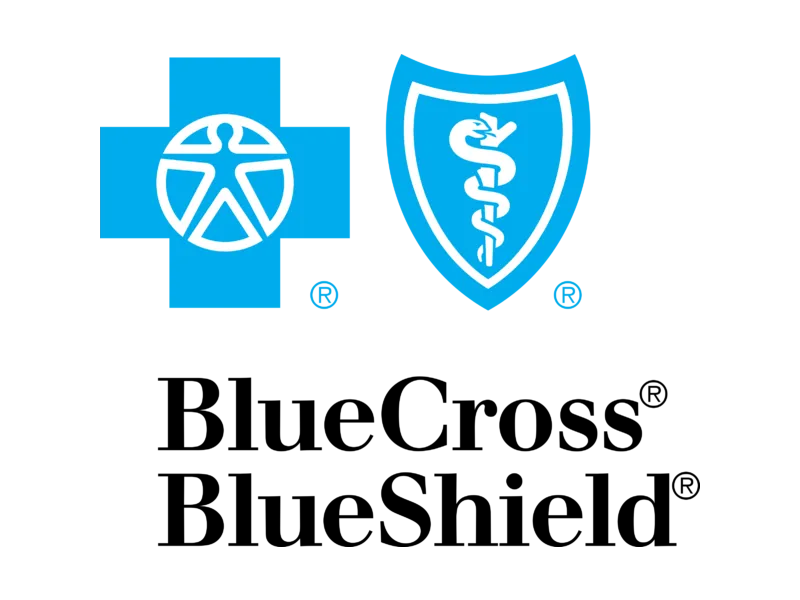Key Points
- Jardiance (empagliflozin) works by helping your kidneys remove excess sugar and sodium from your body through urine.
- There are no specific foods that are strictly forbidden while taking Jardiance, but some choices can increase the risk of side effects like dehydration or yeast infections.
- Limiting high-sugar foods, excessive alcohol, and very-low-carb diets (like keto) can help you get the most benefit from the medication while feeling your best.
- Staying well-hydrated and following a balanced, heart-healthy diet rich in fiber, lean protein, and healthy fats will support Jardiance’s work on your blood sugar and cardiovascular health.
Starting a new medication like Jardiance (empagliflozin) for type 2 diabetes often comes with a lot of questions. Beyond figuring out your dose and when to take it, you’re probably wondering: “Do I need to change what I eat? Are there foods I should avoid?”
It’s a great question, and the short answer is that while there isn’t a strict list of foods that are completely off-limits, your dietary choices matter – a lot. Making smart, mindful choices can help Jardiance work more effectively and, just as importantly, help you minimize potential side effects.
Think of it this way: your diet and your medication are partners. When they work together, you get the best results. This guide will walk you through the types of foods and drinks to be mindful of, what a supportive diet looks like, and how you can make Jardiance a successful part of your health journey.
How does Jardiance actually work?
Before we dive into food choices, it helps to understand what Jardiance is doing in your body. It belongs to a class of drugs called SGLT2 inhibitors.
In simple terms, Jardiance works in your kidneys. Normally, your kidneys filter sugar from your blood and then reabsorb it back into your system. Jardiance blocks this reabsorption process. As a result, more sugar leaves your body (through your urine).
This has two major benefits:
- Jardiance lowers your blood sugar levels, which is essential for managing type 2 diabetes.
- Jardiance helps protect your heart. By removing excess sugar and sodium, Jardiance has been shown to reduce the risk of cardiovascular death and hospitalization for heart failure in adults with type 2 diabetes and known heart disease.
Understanding this "peeing out sugar" mechanism is key. It means your diet can either support this process, making it smooth and effective, or work against it, creating challenges and potential side effects.
Foods & drinks to limit while taking Jardiance
Again, this isn't a list of "forbidden" foods. Instead, think of these as things to consume thoughtfully to reduce your risk of side effects and help the medication do its job.
High-sugar foods & refined carbohydrates
This one might seem obvious, as you’re already working to manage blood sugar. But with Jardiance, there’s an extra layer to consider.
“When you eat a meal high in sugar or refined carbs (like white bread, pastries, or soda), your blood sugar spikes,” says Rita Faycurry, RD. “Jardiance’s job is to funnel that excess sugar into your urine. If you overload your system with sugar, you're essentially making the medication work overtime, creating a suboptimal situation in your body.”
The side effect connection: This sugary urine can create the perfect environment for yeast and bacteria to grow. It’s the primary reason why one of the most common side effects of SGLT2 inhibitors is an increased risk of genital yeast infections in both men and women.
By limiting sugary foods, you’re not just helping your overall blood sugar control – you’re also actively reducing the risk of this uncomfortable side effect.
Foods to be mindful of include:
- Sugar-sweetened beverages like soda, sweet tea, and fruit juice
- Candy, cookies, cakes, and other desserts
- Sugary breakfast cereals
- White bread, white pasta, and white rice
Excessive alcohol
For many people with diabetes, moderate alcohol consumption can be okay, but it requires caution. With Jardiance, that caution is even more important.
Why it matters: Jardiance has a diuretic effect, meaning it makes you urinate more frequently. Alcohol is also a well-known diuretic. When you combine them, you’re essentially doubling down on fluid loss.
The side effect connection: This combination can significantly increase your risk of dehydration and low blood pressure (hypotension), which can cause dizziness, lightheadedness, and fatigue.
There’s also a more serious risk to consider: diabetic ketoacidosis (DKA). Heavy alcohol consumption can increase the risk of DKA. Jardiance also carries a warning for a rare but serious condition called euglycemic DKA, where you can have ketoacidosis even with normal blood sugar levels. Combining the two could potentially elevate this risk.
If you choose to drink, talk to your doctor first and follow these general guidelines:
- Limit your intake (e.g., one drink per day for women, up to two for men).
- Never drink on an empty stomach.
- Alternate alcoholic drinks with water to stay hydrated.
Very-low-carb or ketogenic diets
This might sound counterintuitive. If you have diabetes, shouldn’t you cut out as many carbs as possible? While a lower-carb approach can be beneficial, a very-low-carb or ketogenic diet can be risky when paired with Jardiance.
Why it matters: Ketogenic diets force your body to produce ketones for energy. SGLT2 inhibitors like Jardiance can also increase ketone production.
The side effect connection: The combination of a ketogenic diet and an SGLT2 inhibitor has been shown to significantly increase the risk of developing euglycemic DKA. This is a serious medical emergency.
Before making a drastic change to a very-low-carb diet, it is absolutely essential to discuss the risks with your healthcare provider or a registered dietitian. They can help you find a safe and sustainable carbohydrate goal that works with your medication.
What should you eat while taking Jardiance?
Now for the good part! Focusing on what to add to your diet is often more effective and enjoyable than focusing on what to limit. The best eating plan will support both your blood sugar management and your heart health – the two main goals of taking Jardiance.
Prioritize hydration above all else
Hydration is the single most important dietary habit to adopt while on Jardiance.
“Because the medication makes you lose more fluid, you need to consciously replace it,” says Rita Faycurry, RD. “Staying well-hydrated helps your kidneys function properly, allowing them to efficiently flush out the sugar and sodium as Jardiance intends. This prevents dehydration and reduces your risk of feeling dizzy or lightheaded.”
Aim for 8–10 glasses of water or other non-sugary fluids throughout the day. Listen to your body – if you feel thirsty, drink up!
Build your plate around a heart-healthy pattern
Since Jardiance is prescribed to protect your heart, it makes sense to adopt a diet that does the same. This creates a powerful partnership. Eating patterns like the Mediterranean diet or the DASH diet are excellent models. Research consistently shows that a Mediterranean-style diet can be highly effective for managing type 2 diabetes.
Here’s what that looks like in practice and how it supports your medication:
Load up on non-starchy vegetables
Fill half your plate with things like leafy greens, broccoli, cauliflower, peppers, and cucumbers.
- How it helps: They are packed with fiber and nutrients without spiking your blood sugar. This helps manage your glucose levels from the start, giving Jardiance less "cleanup" work to do.
Choose lean proteins
Include sources like grilled chicken, fish (especially fatty fish like salmon for its omega-3s), beans, lentils, and tofu.
- How it helps: Protein helps you feel full and satisfied, which reduces the likelihood of reaching for sugary snacks that work against your medication.
Incorporate high-fiber carbohydrates
Don’t be afraid of carbs – just choose the right ones. Whole grains like oatmeal, quinoa, brown rice, and whole-wheat bread provide sustained energy.
- How it helps: The fiber in these foods slows down sugar absorption, preventing the sharp blood sugar swings that challenge Jardiance's ability to keep up.
Embrace healthy fats
Foods like avocado, nuts, seeds, and olive oil are great for heart health and can help with satiety.
- How it helps: These fats directly support Jardiance's goal of cardiovascular protection. You're tackling heart health from two angles: medication and diet.
Manage sodium
To support Jardiance’s blood pressure-lowering effects, aim for a lower-sodium diet by limiting processed foods, canned soups, and fast food. The DASH diet is a great framework for this.
- How it helps: Jardiance helps your body get rid of excess sodium. By consuming less sodium, you enhance this effect and provide extra support for healthy blood pressure levels.
Final Thoughts
Jardiance is a powerful tool for managing type 2 diabetes and protecting your long-term health. By making mindful food choices, you’re not just following a “diet” – you’re creating a supportive environment that allows your medication to work its best.
The goal is to partner with your medication. By limiting foods that can worsen side effects and embracing a diet that supports blood sugar and heart health, you take control of your well-being.
Navigating these changes can feel like a lot to handle on your own. If you need guidance on creating a meal plan that fits your life and health goals, working with a registered dietitian who specializes in diabetes can make all the difference. They can offer personalized advice to help you feel confident and empowered on your journey.
Frequently Asked Questions
What happens if I eat a lot of sugar while taking Jardiance?
Eating a lot of sugar will cause a spike in your blood glucose. Jardiance will work to remove this excess sugar through your urine. This can increase your risk of side effects, like genital yeast infections, as the high sugar content in urine can encourage yeast growth. It also works against your overall goal of stable blood sugar control.
Can I drink coffee while taking Jardiance?
Yes, for most people, drinking coffee is fine. Coffee is a mild diuretic, just like Jardiance, so be sure you’re drinking plenty of water throughout the day to stay hydrated. Keep an eye on what you add to your coffee – large amounts of sugar or sugary creamers can impact your blood glucose. Moderate caffeine intake is generally considered safe for most healthy adults.
Can I drink alcohol while on Jardiance?
You should be very cautious with alcohol. Both Jardiance and alcohol are diuretics, and combining them increases your risk of dehydration. Heavy drinking can also raise the risk of diabetic ketoacidosis (DKA), a risk also associated with Jardiance. If you choose to drink, do so in moderation and always with food, and make sure to stay well-hydrated. Discuss it with your doctor first.
Do I need to follow a special diet with Jardiance?
There is no official "Jardiance diet." However, the most effective approach is to follow a balanced, heart-healthy eating plan that is recommended for managing type 2 diabetes, such as the Mediterranean diet or DASH diet. This includes focusing on whole foods, lean protein, high-fiber carbohydrates, and healthy fats while limiting sugar, processed foods, and sodium.
The views expressed by authors and contributors of such content are not endorsed or approved by Fay and are intended for informational purposes only. The content is reviewed by Fay only to confirm educational value and audience interest. You are encouraged to discuss any questions that you may have about your health with a healthcare provider.
Sources
Fay Nutrition has strict sourcing guidelines and relies on peer-reviewed studies, academic research institutions, and medical associations. We avoid using tertiary references.
- A journey into a Mediterranean diet and type 2 diabetes: a systematic review with meta-analyses - BMJ Open
- SGLT2 inhibitors - National Kidney Foundation
- DASH Diet: The DASH Diet for Health - The Nutrition Source from Harvard T.H. Chan School of Public Health
- Empagliflozin - StatPearls
- Sodium-glucose cotransporter-2 inhibitors and genital and urinary tract infections in type 2 diabetes - Interstate Postgraduate Medical Association of North America
- Managing possible side effects - Boehringer Ingelheim Pharmaceuticals











